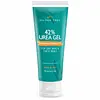What's inside
What's inside
 Key Ingredients
Key Ingredients

 Benefits
Benefits

 Concerns
Concerns

 Ingredients Side-by-side
Ingredients Side-by-side

Water
Skin ConditioningCanola Oil
EmollientUrea
BufferingHelianthus Annuus Hybrid Oil
EmollientPanthenol
Skin ConditioningHydrogenated Coco-Glycerides
EmollientEthylhexyl Stearate
EmollientBehenyl Alcohol
EmollientGlyceryl Stearate
EmollientGlycerin
HumectantNiacinamide
SmoothingPropanediol
SolventDiglycerin
HumectantMyristyl Myristate
EmollientDiisopropyl Sebacate
EmollientStearic Acid
CleansingPolyglyceryl-3 Dicitrate/Stearate
EmulsifyingAllantoin
Skin ConditioningPolyglycerin-3
HumectantCitric Acid
BufferingMethylparaben
PreservativeEthylparaben
PreservativeWater, Canola Oil, Urea, Helianthus Annuus Hybrid Oil, Panthenol, Hydrogenated Coco-Glycerides, Ethylhexyl Stearate, Behenyl Alcohol, Glyceryl Stearate, Glycerin, Niacinamide, Propanediol, Diglycerin, Myristyl Myristate, Diisopropyl Sebacate, Stearic Acid, Polyglyceryl-3 Dicitrate/Stearate, Allantoin, Polyglycerin-3, Citric Acid, Methylparaben, Ethylparaben
 Reviews
Reviews

Ingredients Explained
These ingredients are found in both products.
Ingredients higher up in an ingredient list are typically present in a larger amount.
Urea is also called carbamide and is the diamide of carbonic acid. In cosmetics, urea is used to hydrate the skin. It also provides exfoliation in higher concentrations.
As a humectant, urea helps draw moisture from the air and from deep within the skin. This helps hydrate your skin. Studies show urea is an effective moisturizer for dry skin conditions. 40% urea is typical in medications for treating eczema and other skin conditions.
Urea has the strongest exfoliation effect in concentrations higher than 10%. It is a keratolytic agent, meaning it breaks down the keratin protein in the top layer of skin. This helps remove dead skin cells and flaking skin.
In medicine, urea has been shown to help increase the potency of other ingredients, such as fungal treatments.
Humans and animals use urea to metabolize nitrogen-containing compounds. Urea is highly soluble in water. Once dissolved, it is neither acidic nor alkaline.
Learn more about UreaWater. It's the most common cosmetic ingredient of all. You'll usually see it at the top of ingredient lists, meaning that it makes up the largest part of the product.
So why is it so popular? Water most often acts as a solvent - this means that it helps dissolve other ingredients into the formulation.
You'll also recognize water as that liquid we all need to stay alive. If you see this, drink a glass of water. Stay hydrated!
Learn more about Water